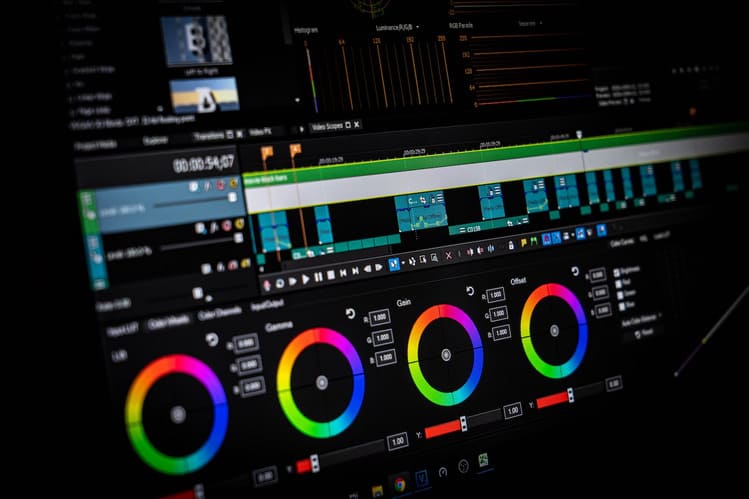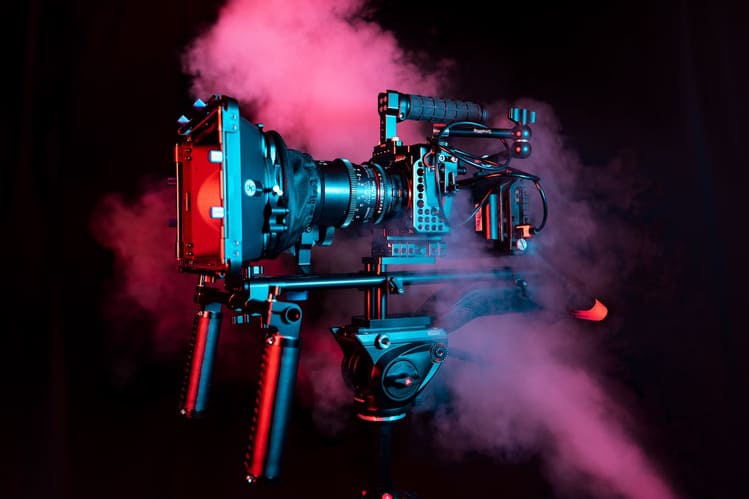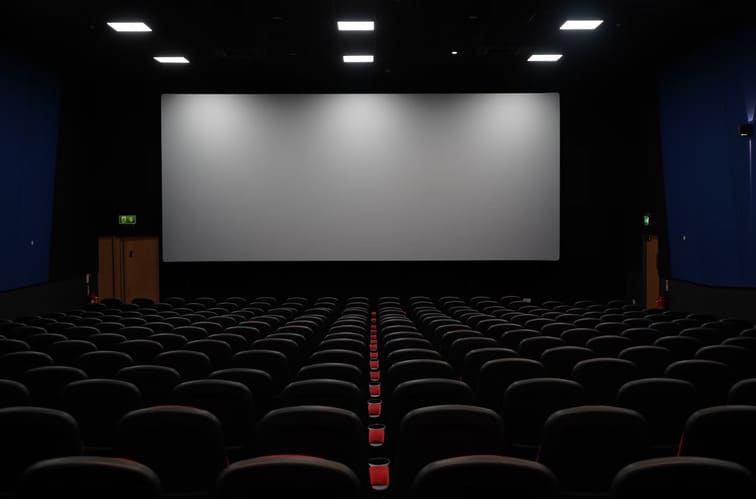Cinematography LUTs Guide: How to use LUTs and Colors For a Cinematic Look

If you’ve never been involved with the production or editing of a video before then the term LUT might not be one that you have come across. Cinematography LUTs are a huge part of the movies and videos we all watch, whether we recognize this or not. In this guide, we’re exploring LUTs in photography and cinematography and explaining what they are and how they function.
An LUT is effectively a part of the coloring process of a video. When a movie is filmed and edited it goes through a lot of different steps to turn it into the end product we see. LUTs have become more widely used and available to a variety of filmmakers and they are very effective when it comes to altering the look of a video.
Explaining LUTs
So what is LUT in cinematography and photography?
The term LUT comes from “Lookup Table” and while you may think of an actual table, LUTs are often actually files or plugins which contain data about colors and their relationship with each other.
Applying an LUT can totally change the look and feel of a video, a little bit like a filter, but this is a much more advanced and technical skill than just adding an Instagram filter to your video.
A good example of how an LUT can alter your footage (or image) is that they can change the way the lighting appears. So, for instance, it can make it look like the photo or video is taken at a different time of the day. Some of the best LUTs for photography and video have very advanced options and filters to change the way the video looks.
Because of the fact that an LUT can effectively be plugged into editing software, it reduces the need for an editor to make a lot of changes manually or to constantly be tweaking filters and color grades. Cinematography LUTs are not only helpful to make all of the footage appear consistent, it adds a very artistic feel to the footage.
What is LUT in Photography?
You may be wondering “what are LUTs in photography?” and while we focus mainly on the video side of things, it helps to understand the role LUTs play in photography.
As these are files that have a variety of settings and can make changes to the coloring of your image (or video) they function in virtually the same way. LUTs can be imported into the software you are using to edit your photographs and therefore they make it easy to apply a simple color profile, and make images suit a certain “look”.
Types of Cinematography LUTs

In the industry, there are some different terms around LUTs, and of course they are all just tools which means different colorists and companies will use them in slightly different ways. The terminology regarding them can also be different depending on the colorist or company, but generally, the LUTs below provide a good overview.
Keep in mind that many of the LUTs out there can fit into one of two categories: “Technical LUTs” and “Creative LUTs”. Some others are much more specific in their uses.
Technical LUTs
These LUTs are used to transfer the video from one color space into another color space. For instance, transferring between the different standards, which include Rec. 709 and DCI XYZ, which are used for HD video and for cinema projection. This is basically a way to perfect the video for different uses.
Calibration LUTs
When it comes to all aspects of color, calibration is vital so that everyone is seeing the video as intended with the correct finished color space. They’re based on different monitors and help to calibrate between different devices and screens.
Viewing LUT
These are LUTs that are normally used during production and especially live productions, and they help to normalize the live shot color profiles. These are mainly for the live information coming out of the camera, which can look unsaturated. These LUTs can be applied to liven up the image and make it closer to the standard profiles to help to adjust and calibrate while on set.
Speed LUTs
These are designed to normalize footage, and quickly convert from camera color profiles to the industry standards that are used, such as Rec. 709. These color profiles are used to capture in HDR and they need more detail and flexibility and the footage that comes from a camera may not be in line with the standards.Companies including Red, Canon, Sony, and Blackmagic all have their own Log profiles and the Speed LUTs are there to normalize and enhance the HDR.
Creative LUTs
The creative LUTs are those that can be used to create an effect and change the way a production looks entirely. The color grading process has become so simple that these LUTs can effectively be dropped onto the image or video to change it, almost as simply as a filter. When you think of some of the most visually stunning films, a lot of them have used LUT cinematography techniques to vastly improve the feel and vibe of the movie.
Explained: 1D LUTs and 3D LUTs
What is a 3D LUT creator in cinematography? The terms 1D and 3D are used a lot when it comes to LUTs and it is helpful if you know what they mean.
A 1D LUT only has the power to control certain parameters such as white point, contrast, color balance, and similar simple edits. 3D LUTs refer to all of the other characteristics that are more visible in a three dimensional space, including the brightness, hue, and even the saturation of the footage.
There is a simple way to work out the difference, as 3D LUTs come with the extension .cube and 1D LUTs have the extension .lut.
While it helps to understand that 1D LUTs do exist, they are not the most common these days, and the vast majority of colorists are creating and using 3D LUTs.
Why Use LUTs for a Cinematic Look?

So why should you be using LUTs anyway? Do they really have a benefit for the types of video you want to make?
When you view our Insight Studios portfolio you will see the professional look and feel to all of our videos, no matter what the genre or style. LUTs are one part of that puzzle. Using coloring in the correct way during post-production (and sometimes in the other phases of filmmaking) helps to provide high production values and set your video apart.
In the modern age, we all watch a lot of YouTube videos and footage that may not share these high production values, so being able to make your videos that extra level of quality will help you to provide a cinematic look and show that your video isn’t “homemade” but it is of the very highest cinematic quality.
It doesn’t matter if you are making a feature film or a commercial, that extra level of quality and production value gives your audience the right message about your brand.
Other benefits of LUTs include:
- Providing a color palette to give a certain mood to your video production. This is the job of a colorist, but LUTs can be very helpful when it comes to post production and can help to give a certain look and feel to your film. For instance, horror films tend to have a dark and cold color palette.
- Calibrate and normalize footage. Footage comes from a variety of different cameras and camera brands, and the option to calibrate this can be a very big help. LUTs can play the very functional role of calibrating to screens and calibrating footage from different cameras to ensure we are all seeing the same thing and working with the same footage.
- Consistency and style. Certain directors, colorists, and even cinematographers are linked to different styles when it comes to color, and LUTs can be looked at as a sort of template for this. They can be used time and time again to keep that consistency through one movie or production, or even across multiple films.
While some people think of LUTs as a sort of time-saving feature, this isn’t the case. They are good for the industry and help video professionals to share and calibrate their work. And ultimately they mean that the videos we end up watching are of higher quality.
Using LUTs to Your Advantage
At Insight Studios, our professional team knows the benefit of having a professional, cinematic look. Whether you are creating a commercial to promote your product, a testimonial video, or a full feature film.
LUTs are a crucial part of coloring, and our team knows that coloring is one of the keys to interacting with your audience and creating an impactful video that truly speaks to people.
Using an LUT properly adds a professional feel to your video and provides the sort of production value needed if you are going to make a real impact. To start to take your video dreams and turn them into reality, reach out to our team at Insight Studios today.